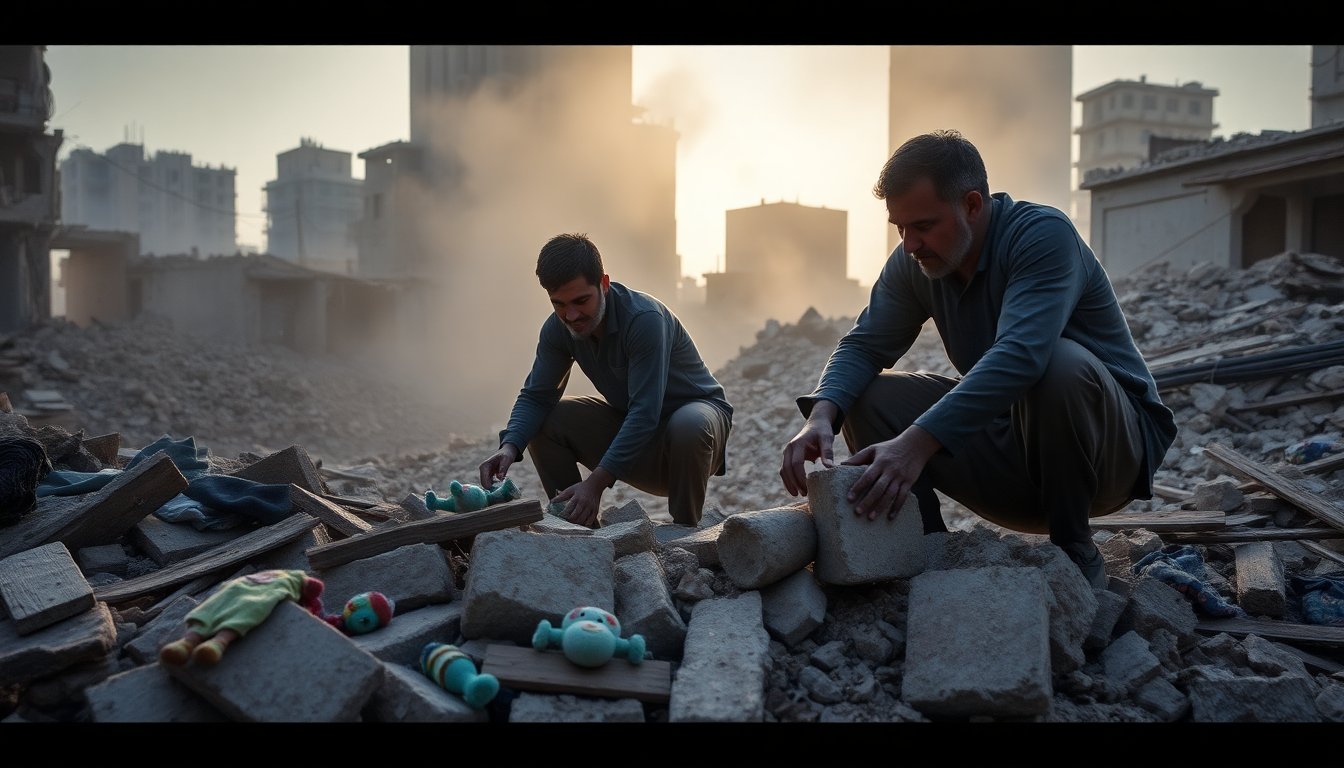Table of Contents
In the early hours of a day in Gaza City, despair and determination fill the air. Mu’ayyad Ajjour and his neighbor, Mohamed Zaida, are on a mission to recover the remains of Ajjour’s five-year-old cousin, Masa, who has been missing since an airstrike devastated their home. This search has become a daily ritual, symbolizing their hope and resilience against overwhelming odds.
Since a ceasefire was declared between Israel and Hamas, the two men have dedicated their days to excavating the rubble of a collapsed building. They hope to find any trace of the young girl. With only basic tools, they have constructed a makeshift pulley system to aid their search. Each day begins at dawn, and they labor until sunset amid the destruction.
The painful search for Masa
The aftermath of war has buried thousands of bodies beneath the rubble in Gaza. The two men understand the grim reality; their search for Masa is one of many efforts by families seeking closure for their loved ones. The airstrike that claimed Masa’s life also injured her mother, who is recovering at Al-Shifa Hospital, while her father’s fate remains uncertain.
A glimmer of hope in a shoe
As Ajjour sifts through the rubble, he uncovers a small white patent leather shoe, possibly belonging to Masa. Time stands still as he holds the shoe, dusting it off gently. “Hammood, where did you find this?” he calls to Zaida, his voice filled with disbelief and hope. The discovery becomes a symbol of their relentless pursuit for answers. “This gives us hope to look,” Ajjour reflects, emphasizing the need to retain faith in despair.
The scale of loss in Gaza
According to United Nations estimates, over 11,000 bodies may still lie beneath the rubble in Gaza. This staggering figure highlights the immense human toll of the ongoing conflict. Since the war erupted on October 7, over 69,000 Palestinian lives have been lost, leaving families shattered and communities in disarray. As the ceasefire holds, the struggle to recover the deceased continues amid logistical challenges and resource shortages.
The humanitarian situation remains dire, with ongoing efforts by the United Nations Development Program to clear debris and restore essential services. Heavy machinery has begun to remove rubble, but the path to recovery will be long and arduous, with millions of tons still needing attention.
Daily struggles and the quest for closure
As day ends at the makeshift excavation site, Zaida emerges from the tunnel, both men exhausted yet resolute. Dripping with sweat and covered in dust, they take a moment to reflect on their work. Ajjour’s voice trembles with emotion as he expresses his desire for a simple burial for Masa. “I just want to lay her to rest according to God’s decree,” he states, revealing the profound grief that accompanies their search. “What did she do to deserve this?”
Despite the obstacles, Ajjour and Zaida remain committed to their mission, digging through debris day after day. “God decrees that we not abandon her,” Ajjour says, emphasizing the bond he feels with the child he once knew. Their journey is not just about finding a body; it is a search for peace, a quest for closure in a landscape marked by loss.
In the depths of rubble and among shattered lives, the search for Masa and others continues—a powerful reminder of the enduring human spirit amid unimaginable tragedy.


